When you are out shopping pots and pans, you will notice that some of them are expensive. Surely, they will have an attractive appearance, which will make you only want to buy them.
But deep down, you might wonder if they are worth it. That’s a question we all ask ourselves when we encounter an overly priced product. And often, they are not worth the price.
So the dilemma here is whether or not you should buy expensive cookware. Because, if they are not worth it, is there any point in purchasing them?
That is what we are here to discuss. You will get to know whether the cookware’s price tag accounts for their features and performance or not.
What Types Of Cookware Are Expensive?
Every type of cookware can be available at a high price range, depending on its construction, a combination of materials, etc. However, metal cookware is usually the costliest one.
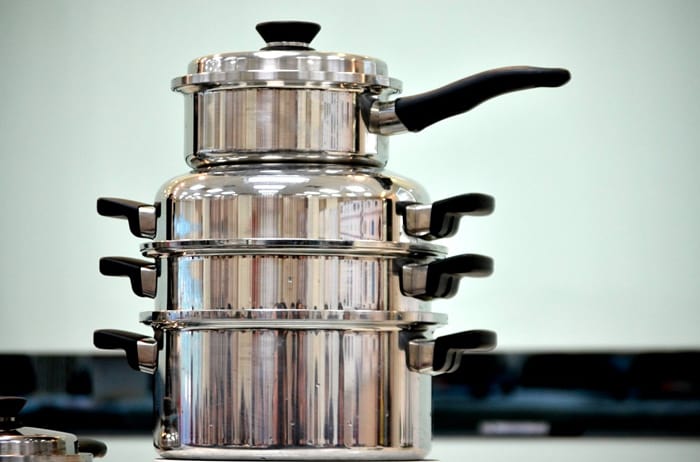
Clay, stoneware, or non-stick pans don’t cost as much. You can get them at low price ranges, usually.
Among metal cookware, copper happens to be the most expensive one. That should give you an idea by now as to why they are called copper luxury cookware.
However, red copper cookware usually cost a little less than their stainless steel or tin lined counterparts. But, the price is still a lot more than a regular pan or pot.
The next in line is stainless steel cookware. Unlike copper pans, this one comes at really affordable prices. But, the ones that are layered with copper or aluminum are quite expensive.
Aluminum is inexpensive. They are quite a good option if you are looking for cookware that is cheap and thermally efficient. However, their anodized versions do cost a few more bucks than their non-anodized counterparts.
On the other hand, carbon steel and cast iron are not very expensive either among metal pans. You can get entire sets of these at really affordable prices.
Expensive Cookware Features: Are They Worth the Price?
If you are investing a lot of money into something, then you would surely expect it to turn out well and up to the mark. Expensive cooking sets, however, are not something to purchase and to be explored later because they cost a lot.
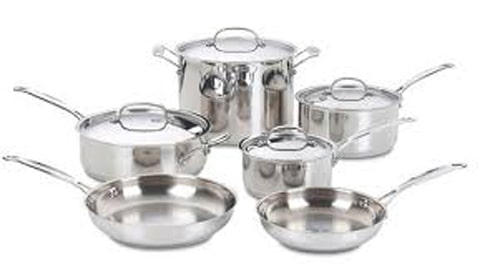
Sturdiness
Have you ever heard of expensive cookware lasting for about a few months only? The answer is obviously no because these pans are usually very long-lasting.
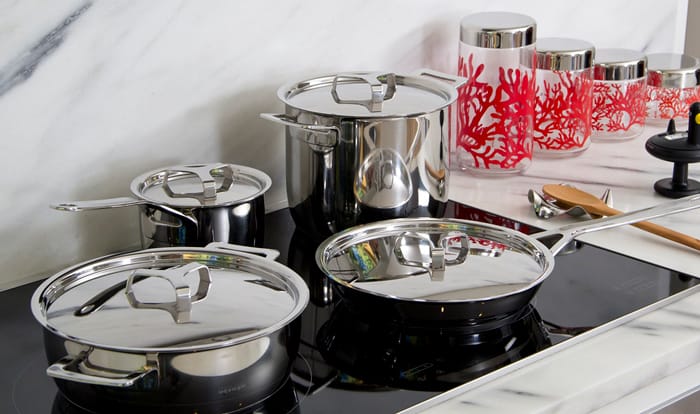
This cookware is expensive because it is built using costly materials. Now, the materials are generally sturdy, good at thermal conduction, and rust/corrosion resistant, as well.
If they don’t match any of the criteria above, then some other material is layered with them. But we will get to that later.
Copper and stainless steel are usually costly, and these two make the best cookware. The materials themselves are high in demand, and the facilities that they offer cannot be found in others.
Construction
Stainless steel is thermally inefficient. Bare copper is toxic. But they still make fantastic cookware – why? That is simply because of their construction.
When a material is not a good conductor of heat, it is layered with a metal that is indeed a good conductor. On the other hand, when metal is toxic, it is coated with some additional material or is anodized for more excellent protection.
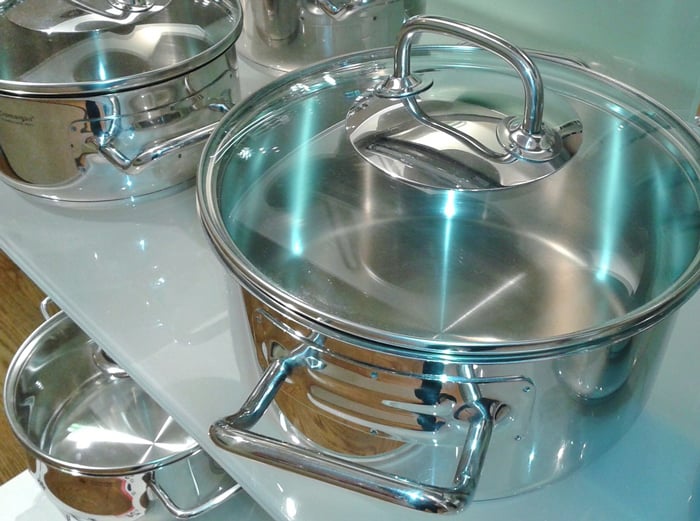
Moreover, let’s not forget about the handle. A good handle is important- one that will neither burn your hands nor break apart easily. All of these fall under the construction sector of the cookware.
The addition of materials and good construction is going to cost more bucks. But, it is all for a good cause.
Heat Distribution
One of the most important aspects of cooking meals deliciously is uniform heat distribution in the pans. If the food cooks unevenly, or worse, if it gets scorched, then it surely will not taste as good.
This feature is only available in expensive cookware. Optimal heat management always comes at a cost, and it should. Materials that happen to be good conductors of heat are quite costly themselves.
Cheaper materials are incapable of transferring heat efficiently. Except for aluminum, of course. But, anodized aluminum pans are quite expensive themselves, and those are the ones you should go for.
Reactivity
When you are cooking your meals, you surely wouldn’t want the ingredients to react with the pan itself. Unfortunately, that does happen with some cookware. Some of those are downright unhealthy for your body.
Expensive pots and pans don’t react with ingredients. That is because the reactive metals are coated with the unreactive ones. For instance, copper reacts quite easily and should not have direct contact with acidic or alkaline elements.
To avoid this problem, copper pans are lined with stainless steel or tin. That does cost a little more, but it surely is worth it. With copper, you get the best thermal conductivity, and with steel/tin, you are guaranteed to have healthy and safe food.
However, despite the lined surface, this cookware wouldn’t be a good option for a glass stove.
Expensive Vs Affordable Cookware
You might feel like cheap cookware could replace their expensive counterparts any day. In some cases, that could be true. However, in most cases, it isn’t, and we are about to tell you why.
For instance, the low priced ones are not durable at all. They are so fragile that if you use them roughly, then they might need to be replaced in a few months. Surprisingly, even if they are taken care of, they still wouldn’t last for years.
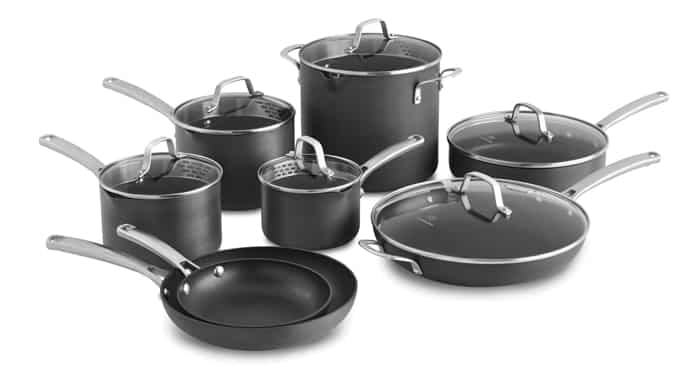
That is, however, not the case with expensive cookware. They are durable, and with proper maintenance, they can last for decades.
Cheap pans are usually constructed with low priced materials. This is what makes them prone to cracks, scratches, etc. Costly pans are usually crack and scratch-resistant.
Not to mention, affordable pans are very bad at distributing the heat properly. They heat up very slow, which wastes a lot of energy. Due to uneven heat transfer, food doesn’t cook as well on them.
Expensive cookware can always assure you of proper heat distribution. Therefore, if you want better-cooked meals, then they are the ones to go for.
While cheap cookware may not react with the ingredients, it might still be harmful to your health. For instance, Teflon coating releases toxic fumes and might crack and come off with the food.
You can avoid such incidents when using expensive cookware, although bare copper can react with food, which is why they are mostly coated with other materials.
Final Words
There’s an old saying that states, ‘you get what you pay for.’ While this may not apply to every purchase we make, but it is true in most cases. And when it comes to cookware, it is always true.
So, if you want to get yourself a good set of cookware, do invest in it. Such pans will accompany you for a long time while standing up to your expectations in all of your cooking sessions.

